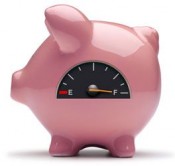Understanding the financial health of your business puts you in the driver’s seat. A poorly organized and poorly managed set of financial statements can send you on a path toward a major crash. A simplified financial dashboard is an excellent tool to keep your company on track.
Money in and money out

One significant use of a dashboard is to help you manage cash flow. Like a gas gauge for your business, a dashboard helps you quickly look at your cash needs (payables) and your cash resources (receivables) to determine if you are on the right cash track. First you need to make sure your dashboard includes the correct receivable and payable amounts by avoiding these common mistakes:
- Some bookkeepers like to create an invoice for the full job as soon as you’ve received a signed contract. But if you do that, your receivables will be significantly overstated, showing what you should receive sometime in the distant future instead of in the near future.
- Other bookkeepers don’t want to go to the bother of entering bills and credit card charges until the statements arrive. Doing that will significantly underestimate your payables.
A combination of these poor practices will make your dashboard show that expected cash flow is fantastic. And you might just run out of gas without warning.
Other key dashboard gadgets
Include on your dashboard other items that you want to track on a regular basis including:
- Outstanding change orders waiting for approval
- Committed costs (costs for jobs that are not entered into payables yet)
- Leads in the pipeline and the bid-to-close ratio
- Warranty and service call backs
Remember that your dashboard is an overall picture of your company’s health and future. Use the dashboard to set priorities and spot potential setbacks before they take you off your path to profit.

